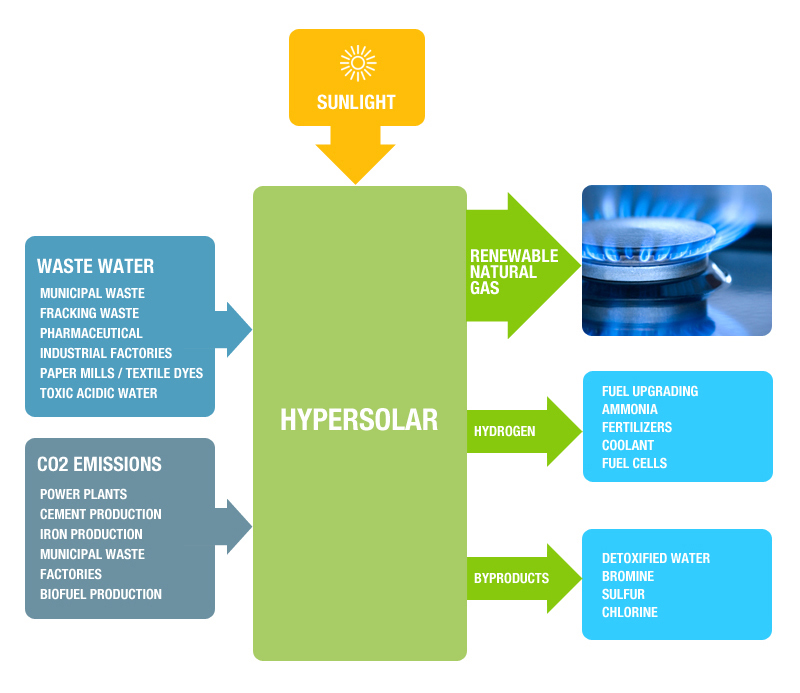Synthetic photosynthesis makes natural gas


The carbon emitted by power plant smokestacks could one day help heat your home. A start-up company is attempting to patent its process to manufacture natural gas by combining solar power with carbon dioxide and water.
Santa Barbara, CA. based HyperSolar was inspired by nature: the process mimics photosynthesis. A solar powered nanoparticle system separates hydrogen from water; the hydrogen is then mixed with carbon dioxide, producing methane.
(Chemistry buffs: the former reaction is a form of photoelectrochemical reaction, and the latter is a Sabatier reaction.)
HyperSolar announced its patent application today, is in the conceptual phases of development, and did not name any partnerships. It intends to be competitive with future natural gas prices, and will lower its cost of production by solving wastewater and CO2 disposal problems.
HyperSolar says that the process would be sustainable, and it will co-locate with CO2 emitters or wastewater facilities that produce hydrogen. Existing natural gas infrastructure will transport the fuel to customers. The process can be scaled by adding more vessels and more nanoparticles, explained CEO Tim Young.
"It’s safe to say that if there are people and industry in a municipality... there is guaranteed wastewater and CO2. Ideally for us, it would be a city that gets plenty of sunlight," said Young.
HyperSolar is positioning itself as a clean source of natural gas that will not have the environment drawbacks associated with traditional drilling or mining. Some natural gas drilling has been linked to groundwater contamination.
"We use up just about every CO2 molecule into the making of methane, CH4. So, the more methane the world consumes, the more CO2 emissions we reduce," said Young.
This post was originally published on Smartplanet.com